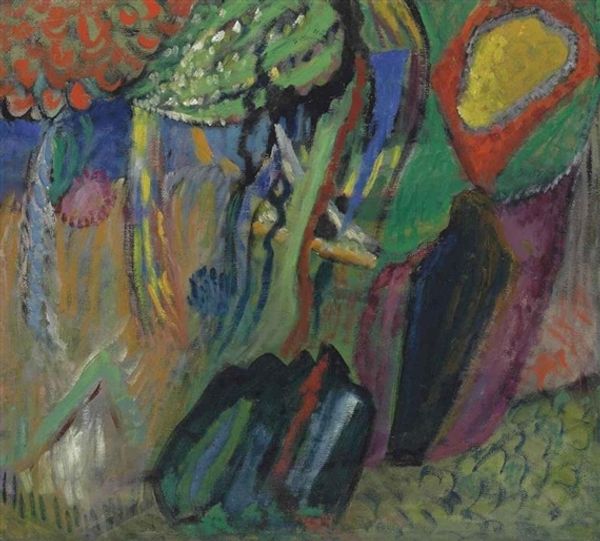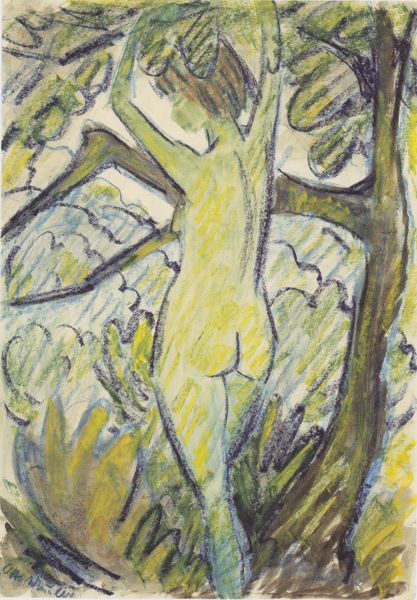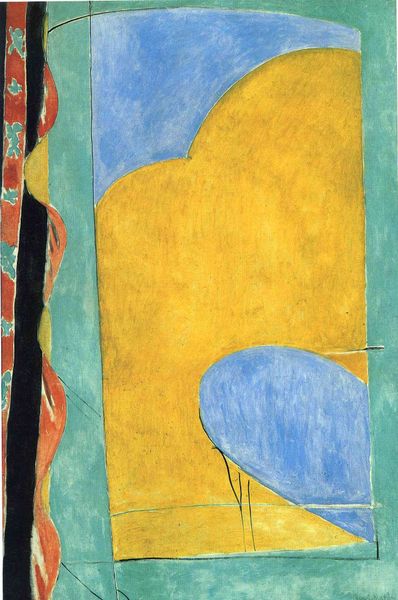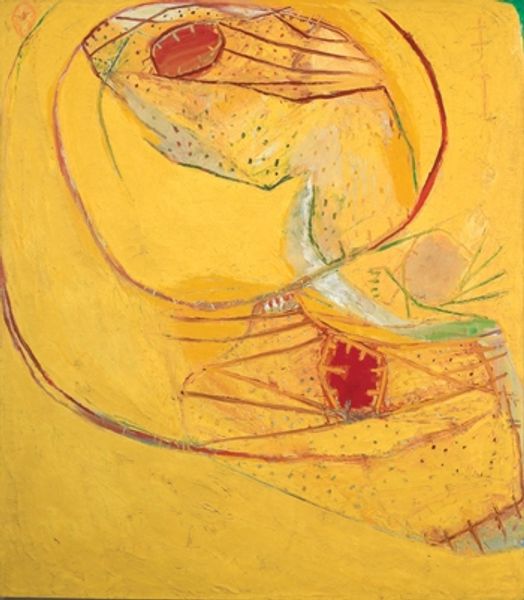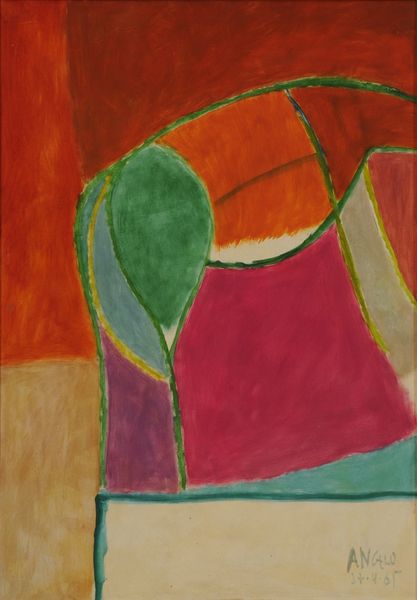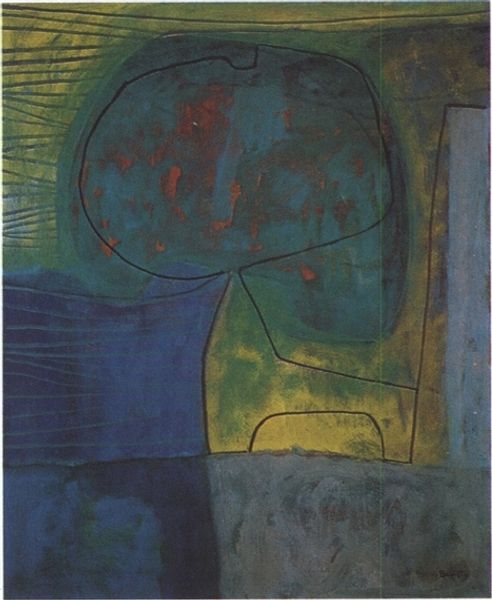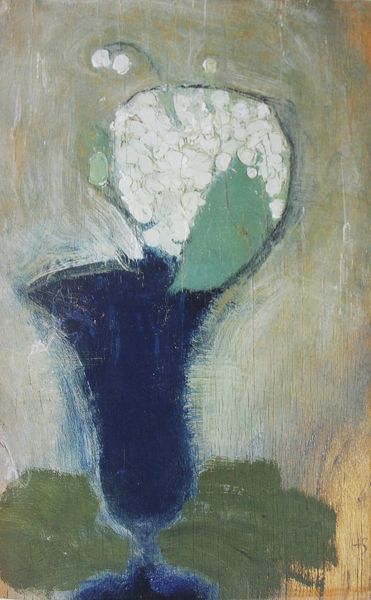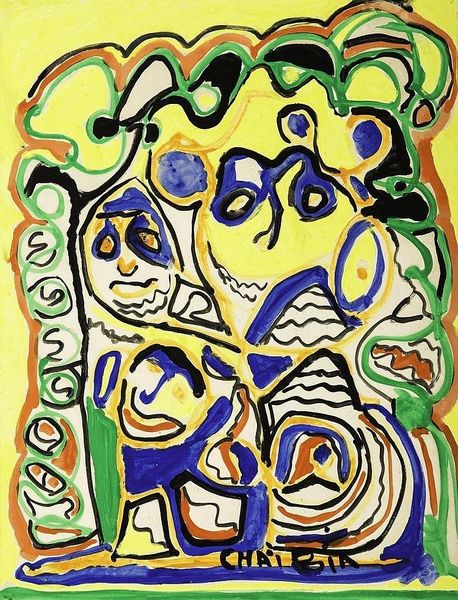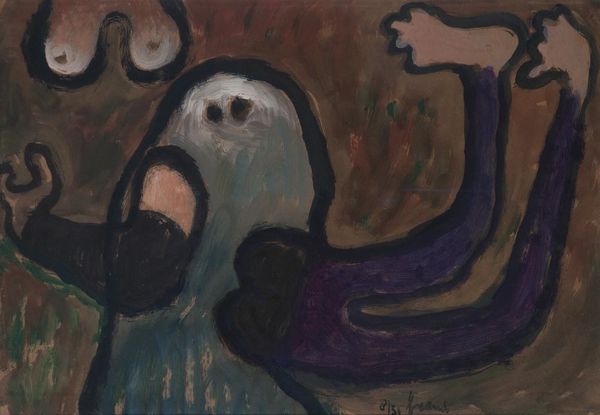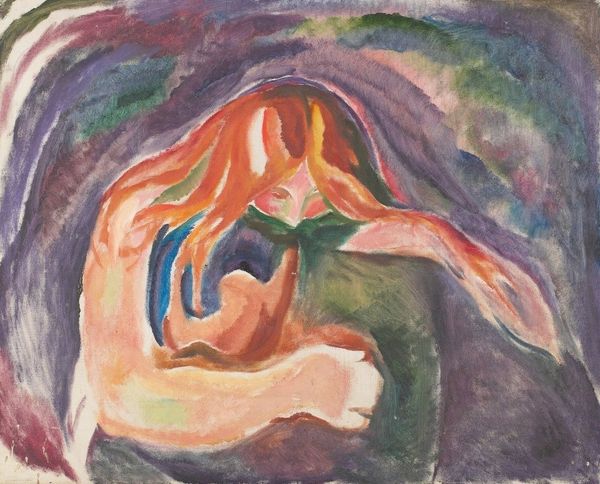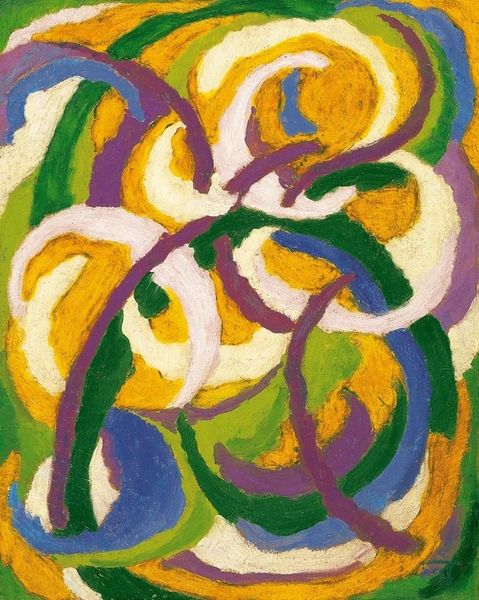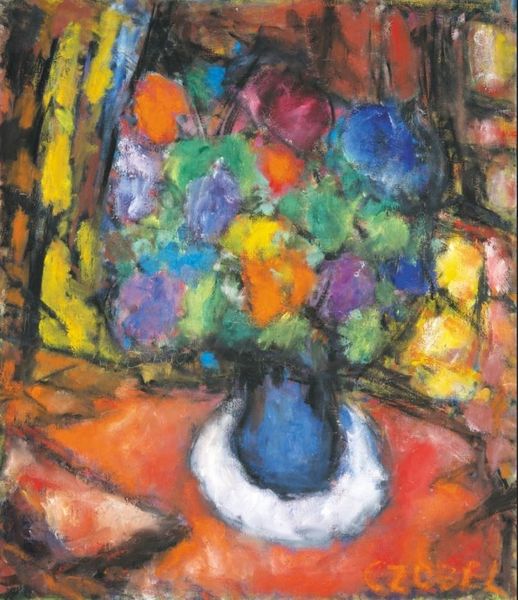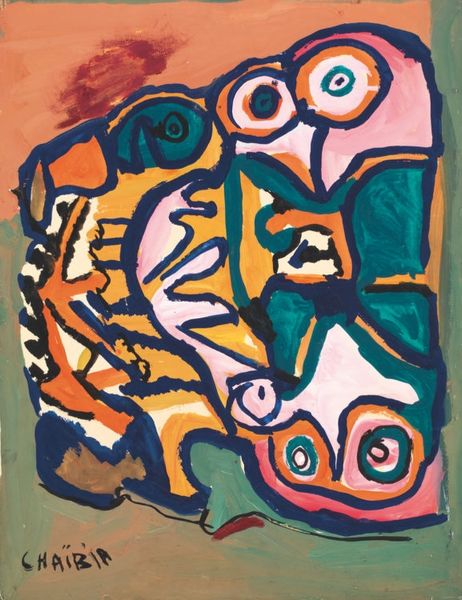
Dimensions: 108.3 x 88.6 cm
Copyright: Public domain US
Curator: What catches your eye first about Frantisek Kupka's "Oval Mirror" from 1911, currently residing here at MoMA? Editor: The raw texture, honestly. It's so immediate. You can see the heavy brushstrokes layered, giving it almost a sculptural feel. It pulls you in to examine the materiality of paint and canvas itself. Curator: It's an oil painting that sits between Fauvism and Orphism. Kupka, with this work, navigates representing the human form. Consider that he uses abstraction in this piece as an early investigation of gender identity, looking at fluidity and distortion as ways to reflect how we construct ourselves. Editor: Constructed selves via a constructed painting. The painting *is* an artifact created under specific conditions of production, in a studio by a maker—how might this making reveal certain truths or expose the artifice of self-construction? The vibrant yet limited palette really reinforces this feeling of a singular making too, like a craft object made with care. Curator: It’s crucial to read how the artwork invites discussions around representation of self. Kupka engages abstraction to push against rigid definitions. Looking through intersectional lenses lets us acknowledge art history’s diverse ways of portraying identity, power, and resistance through visual form. The question becomes who has access to seeing themselves represented? Editor: The canvas is not neutral either. Considering what goes into the process – the mining of pigments, the labor of the painter – all of it points to how social relations get embedded within the material of the painting, regardless of what he depicts. How can this object highlight the unseen forces that determine production? Curator: A thought-provoking reading on the materiality and production, drawing our awareness beyond the frame. Thinking about "Oval Mirror", perhaps understanding Kupka’s work allows us not just a different view on painting of that period, but about how artistic representations become spaces of both revelation and further inquiry of social issues. Editor: Precisely. And by extension, a deep examination of the means of artistic production provides unique insights into the values of his moment in time.
Comments
No comments
Be the first to comment and join the conversation on the ultimate creative platform.
